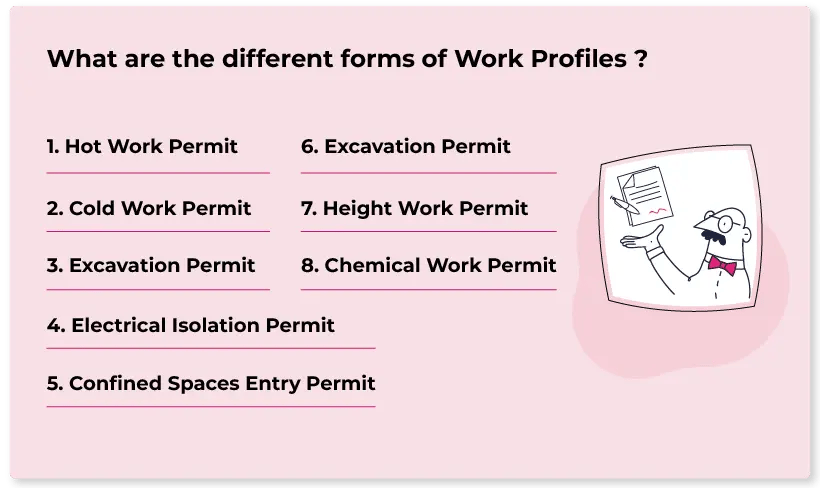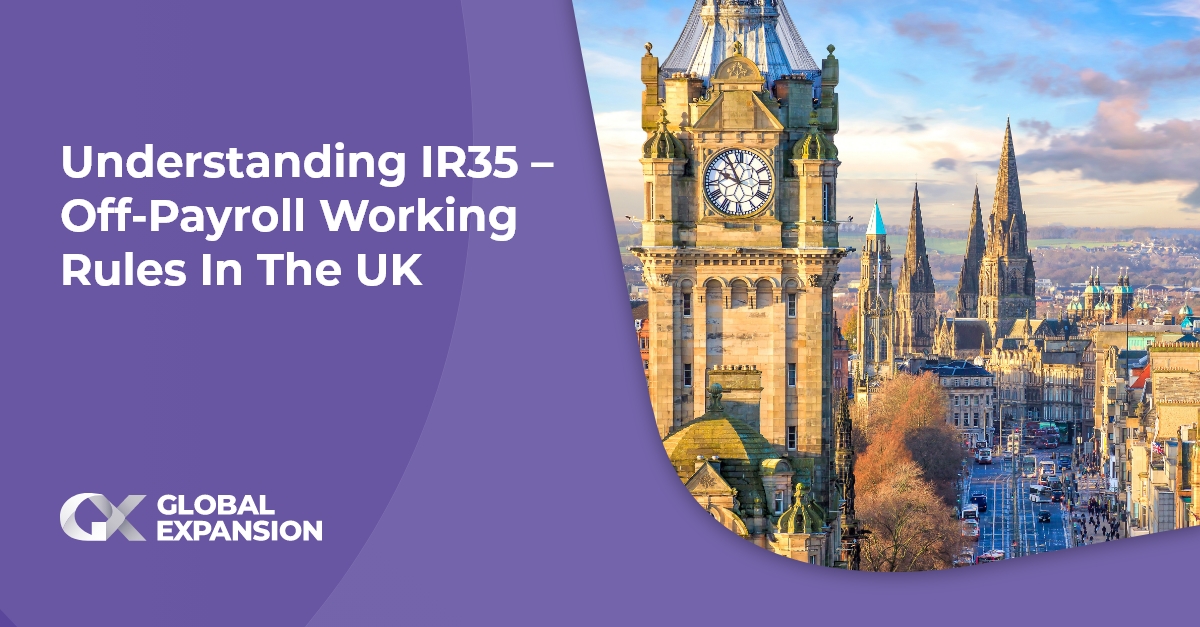What Is a Work Permit: A Comprehensive Look at the Process
People move abroad for work to access better job opportunities and higher salaries than those available in their home countries. Working overseas can also offer valuable experience and career advancement, particularly in global industries. However, to continue your career in another country, you must have the right to legally work there.
In this piece, we will outline what a work permit is and how you can gain one for your dream role.
Foreign Living
It is an exciting and transformative experience to live in a foreign land. A well-planned approach is essential to fit into a completely new culture. Before moving to another country, consider these factors and be well-versed with what are the work permit requirements.
A. Researching Potential Destinations
Cultural Compatibility:
- Start by researching places that match your cultural tastes and lifestyle.
- Keep updated about what language is used by localized, temperature, and local customs, and what is a work permit procedure while looking for a location that suits your interests.
Job Opportunities:
- Explore employment marketplaces in other nations to find exciting opportunities in your field.
- Research growing industries and in-demand talents to improve your job chances.
B. Understanding the Legal Requirements
Visa and Residency:
- Research what the work permit, visa, and residence requirements are for your preferred location.
- Keep an eye on the visa application procedure, document requirements, and restrictions of living and working in the nation.
Legal Obligations:
- It includes being well-versed with local rules and regulations that apply to inhabitants.
- Rights, duties, and any legal obligations you must follow throughout your stay.
C. Setting up Finance
Living cost:
- Research and estimate the cost of living in your preferred destination.
- Consider lodging, transportation, healthcare, and everyday costs while creating a budget appropriate for your financial situation.
Savings and Cushions:
- Build a savings and emergency fund for security and to protect you against unexpected expenses.
D. Cultural Immersion and Social Integration
Language Proficiency:
- Learn the local language for better communication and overall enjoyment.
- Attend language lessons or utilize language-learning applications to improve your skills.
Regional Sense:
- Comprehend with local conventions, traditions, and norms.
- Participate in local community activities, attend city events, and build networks with locals and expats.
E. Long-term Planning and Adjustment
Healthcare and Insurence:
- Investigate healthcare choices in the new nation and obtain suitable insurance.
- Keep track of healthcare facilities, emergency services, and any immunizations necessary.
Local Networking:
- Establish a solid support system by networking with local communities, expatriate groups, and expats.
- Networking can bring significant insights, support, and guidance in handling obstacles.
Long-term finance planning:
- Recognize the tax ramifications of living abroad and seek expert guidance.
- List long-term financial planning, including pension plans and investments.
A Comprehensive Guide About What is a Work Permit?
A work permit is a legal document that allows you to lawfully seek work, obtain employment, and make an income in a foreign nation.
Many countries require permanent or temporary work permits to allow you to work inside their borders, and obtaining one involves a multi-step application procedure.
However, once you understand what is a work permit, the next step is to apply for one.
United States Work Permit: How Does One Apply for a Work Permit?
The application process for job permission varies by nation.
Let me explain eligibility and the application procedure to you by taking an example of the United States of America (USA) work permit process.
Applying for a Work Permit in the United States
A work permit in the United States (USA) is also called an “Employment Authorization Document (EAD) or Form I-766.” It is obtained via the United States Citizenship and Immigration Services (USCIS).
EAD document allows the possessor to lawfully work and make an income in the United States (usually temporarily). Foreign workers are issued a social security number (SSN) and work permit, which secures them from discrimination based on their immigration status under "Federal law in the USA."
Who qualifies for a work permit?
Many immigrants can apply for a work permit through the “United States Citizenship and Immigration Service (USCIS).” For the privilege of receiving a green card from the USCIS, immigrants must fulfill specific qualifying requirements.
Eligible Immigrants Include:
- DACA recipients
- K-1 Fiance Visa Holders and Asylees
- Immigrants with pending adjustment of status (green card) applications.
Immigrants With Exceptional Ability:
- Spouses of certain visa holders
- Immigrants holding Temporary Protected Status (TPS) or Deferred Enforced Departure (DED)
What are the Different Forms of Work Profiles?
 Work permissions are divided into several types based on the nature of the work and the potential hazards.
Work permissions are divided into several types based on the nature of the work and the potential hazards.
Hot Work Permit
It is for actions that may cause sparks, flames, or other ignition sources. Welding, soldering, flammable gasses, and other heat-inducing procedures require a Hot Work Permit.
Cold Work Permit
Authorization to operate machines or do other duties that do not create heat throughout production. Cold work permits include mechanically induced bending, shearing, squeezing, and drawing.
Height Work Permit
Authorization to operate on raised places (2m above ground), such as ladders, scaffolding, mobile augmented operating platforms (MEWP), and other off-the-ground locations.
Confined Spaces Entry Permit
Authorization to conduct work in a small space prone to dangers such as asphyxiation, a chemical that can envelop, a poisonous environment, and so on. Vents, shafts, sewage systems, tanks, and similar structures are examples of confined spaces.
Excavation Permit
Authorization for workers to mine or excavate land to construct infrastructure, harvest resources, or uncover buried relics. Excavating involves risks like falling, getting trapped, explosions, airborne toxins, etc.
Chemical Work Permit
Authorization to operate with hazardous chemical compounds or in a chemically induced environment that is poisonous or corrosive. Chemical engineers often work in chemical factories and laboratories.
Electrical Isolation Permit
Authorization to work in high-voltage zones prone to unregulated electrical distribution. Electrical engineers typically oversee and maintain lock-out systems and perform site maintenance.
A Brief Overview of Different Visa Permits
At this stage, you know what is a work permit and the different types of professions foreign countries permit:
- Temporary ones cater to short-term contracts.
- Permanent versions accommodate individuals committed to residing permanently.
- Sector-specific authorizations serve particular industries, while skill-level-specific licenses are tailored for jobs demanding distinct expertise.
Primary Work permit visas are explained below-
A. Temporary Work Permits:
These permits allow persons to work in a foreign nation for a particular period. These permits are frequently associated with a specific task or project and are issued in response to the employer's urgent requirements.
B. Permanent Work Permits:
Permanent work permits allow persons to work in a foreign nation for an extended period or permanently. These permits are often provided to those with certain conditions, such as holding a steady job or meeting residence restrictions.
C. Sector-specific Work Permits:
Sector-specific work permits are customized to specific industries or sectors. They enable individuals to work just in the selected field, ensuring that their abilities align with the demands of that particular business. These permits frequently demand verification of qualifications and experience in the appropriate field.
D. Skill-degree Specific Work Permits:
It is provided depending on an individual's degree of skill or credentials. Countries may classify work permits based on skill level, including high-skilled and low-skilled workers. The qualifying requirements for skill-degree-specific work permits are identified by the skill set test and credentials necessary for the proposed employment.
What is a Work Permit: Terminology
- Work Permit (WP)
- Temporary Work Permit (TWP)
- Permanent Work Permit (PWP)
- Employer Sponsorship (ES)
- International Agreements (IA)
- Point-Based Immigration System (PBIS)
- Self-Employment and Entrepreneurship Routes (SEER)
- Family or Partner Relationships (FPR)
- Refugee (RF)
- Asylee (AS)
- Special Skills or Expertise (SSE)
- Immigration Authorities (IA)
- Documentation (Docs)
We Can Help Organizations Grow Their Global Teams
Global Expansion provides Employer of Record (EOR) services that enable companies to expand their global workforce. Stay compliant, access the top talent, and pay your international team seamlessly. Talk to our global hiring experts about how to build your workforce today.
Subscribe to our blog
Receive the latest GX blog posts and updates in your inbox.
.webp?width=820&height=444&name=Image%20(1).webp)



